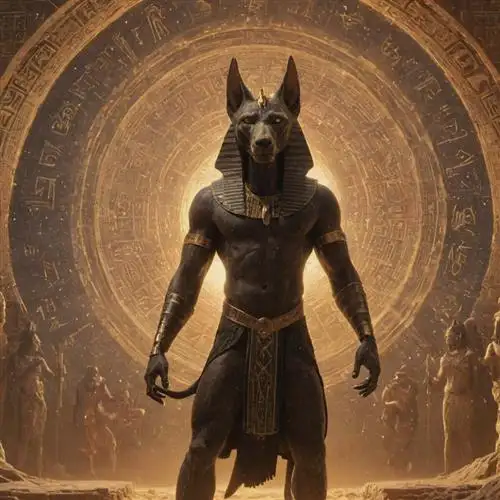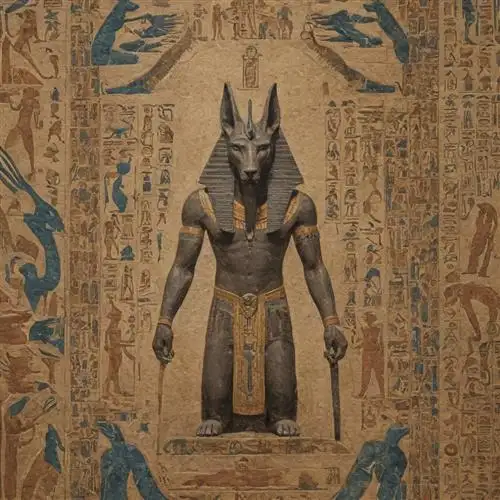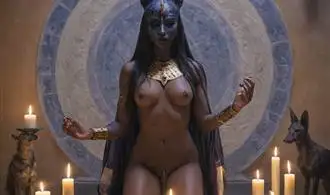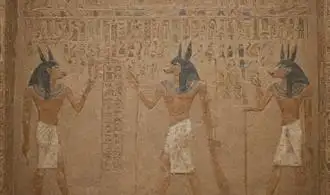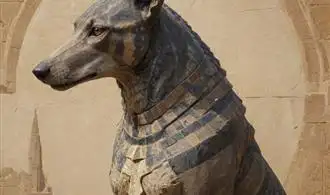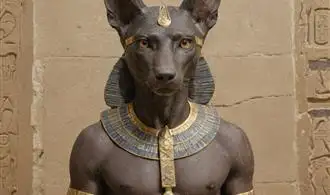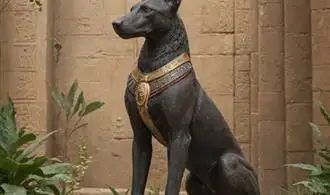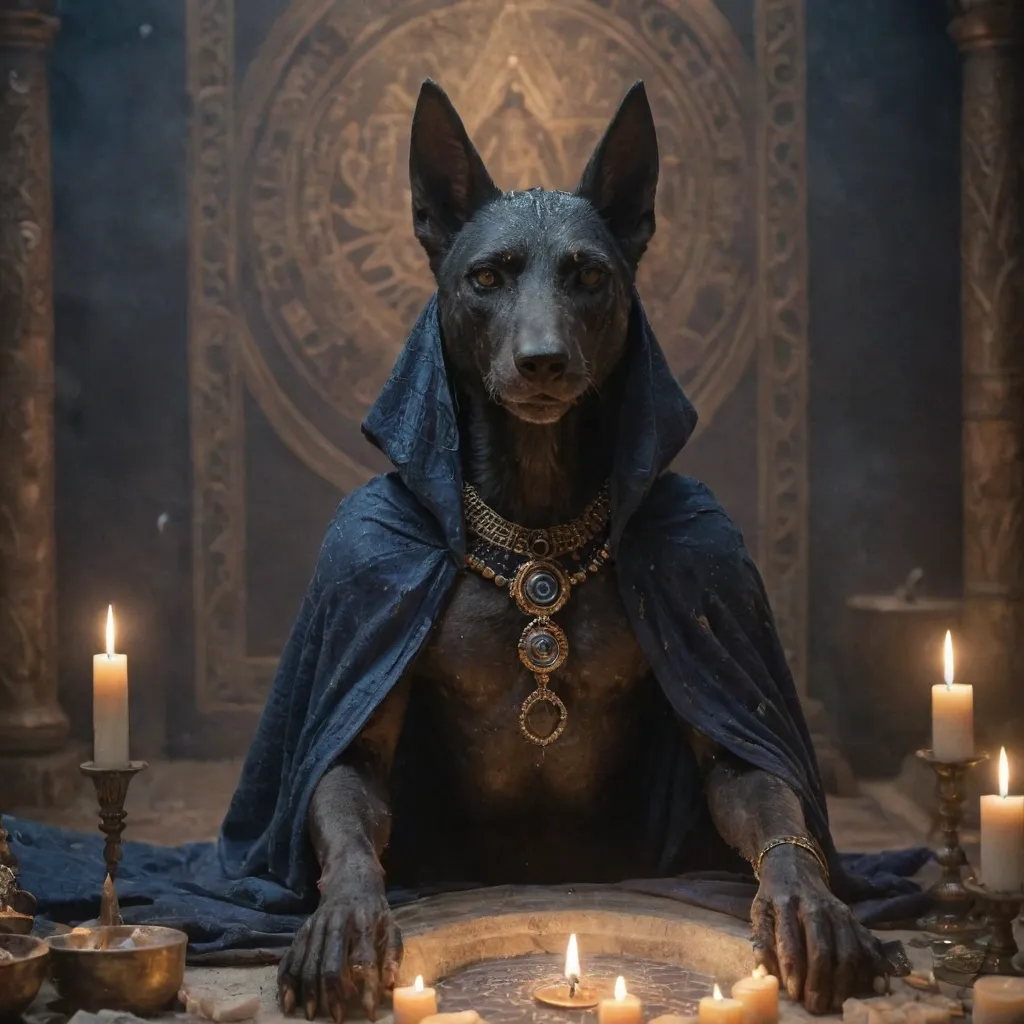
The Origins of Anubis
Anubis, the enigmatic deity of ancient Egyptian mythology, has captured the imagination of scholars and enthusiasts alike. As the god associated with mummification, the afterlife, and the dead, Anubis' origins and significance hold profound implications for understanding the Egyptian conception of the afterlife. Tracing the evolution of this iconic figure sheds light on the rich tapestry of Egyptian religious beliefs and their enduring legacy.
Anubis' emergence as a prominent deity can be traced back to the Early Dynastic Period, around 3100-2686 BCE. Initially, Anubis was depicted as a jackal-headed deity, a reflection of the animal's association with the desert and its role as a scavenger of the dead. This connection to the liminal spaces between life and death likely contributed to Anubis' role as a guide and protector of the deceased, guiding them safely through the perils of the afterlife.
As the Egyptian pantheon expanded and evolved, Anubis' significance grew, and he became closely linked with the mummification process. The jackal-headed figure was believed to oversee the embalming and wrapping of the deceased, ensuring the proper preparation of the body for its journey to the afterlife. This sacred duty solidified Anubis' position as a central figure in the funerary rituals and beliefs of ancient Egypt.
Moreover, Anubis' role extended beyond the realm of the dead. He was also associated with the process of judgment, where the deceased's heart was weighed against the feather of truth, determining their worthiness to enter the afterlife. This pivotal moment in the Egyptian conception of the afterlife further cemented Anubis' status as a guardian and arbiter of the dead, responsible for ensuring the proper transition of the soul to the next realm.
The Role of Anubis in the Afterlife
Anubis, the ancient Egyptian god of the dead, played a crucial role in the afterlife. As the patron of embalming and the guide of souls to the afterlife, Anubis held immense significance in the Egyptian belief system. His presence was integral to the journey of the deceased, ensuring a smooth transition from this world to the next.
The primary responsibility of Anubis was to oversee the mummification process, which was essential for the preservation of the physical body. This process was not merely a practical necessity but also a sacred ritual that prepared the deceased for their journey to the afterlife. Anubis would carefully monitor each step of the mummification, ensuring the proper treatment of the body and the necessary rituals were performed.
Beyond the mummification process, Anubis also guided the souls of the dead to the underworld, where they would face the final judgment. This journey was fraught with challenges, and Anubis, with his keen senses and intimate knowledge of the underworld, would lead the way, protecting the deceased from the dangers that lurked within. His presence was a comforting and reassuring one, as the deceased placed their trust in his guiding hand.
At the heart of the afterlife ritual was the weighing of the heart ceremony, where the deceased's heart was weighed against the feather of truth. Anubis played a crucial role in this process, overseeing the weighing and ensuring the fairness of the judgment. His keen eye and unwavering commitment to justice were essential in determining the fate of the soul, whether it would be granted eternal life or condemned to eternal damnation.
The role of Anubis in the afterlife extended beyond the immediate judgment. He was also responsible for the protection and preservation of the deceased's soul, ensuring their safe passage to the next life. This involved guarding the body, the mummified remains, and the various funerary objects that were interred with the dead, all of which were essential for the soul's continued existence.
Anubis's influence on the afterlife was not limited to the practical aspects of the journey. He also held a symbolic significance, representing the transformation and rebirth that occurred in the afterlife. His jackal-headed form was a potent symbol of the duality of life and death, and his presence served as a constant reminder of the importance of honoring the dead and respecting the sacred rituals that ensured their safe passage to the next world.
Anubis and the Judgement of the Dead
Anubis, the ancient Egyptian deity associated with mummification and the afterlife, played a pivotal role in the judgement of the dead. As the god who presided over the weighing of the heart ceremony, Anubis was responsible for determining the fate of the deceased in the afterlife. This intricate process, steeped in the rich mythology and beliefs of ancient Egypt, offers valuable insights into the Egyptian conception of the afterlife and the role of Anubis as the guardian of this sacred ritual.
The weighing of the heart ceremony, also known as the Judgement of the Dead, was a crucial step in the journey of the deceased to the afterlife. During this ritual, the heart of the deceased was weighed against the feather of Ma'at, the goddess of truth and justice. If the heart was found to be true and pure, it would balance with the feather, signifying that the individual had lived a virtuous life and was worthy of entering the afterlife. However, if the heart was found to be heavier, indicating a life filled with sin and wrongdoing, it would be devoured by the monstrous creature Ammit, condemning the individual to a fate worse than death.
Anubis, the jackal-headed god, was central to this process. As the god of embalming and the protector of the dead, Anubis was responsible for overseeing the entire funerary rite. He would carefully prepare the body for its journey to the afterlife, ensuring that the mummification process was performed with the utmost care and attention to detail. Additionally, Anubis would escort the deceased to the Hall of Judgement, where the weighing of the heart ceremony would take place.
During the ceremony, Anubis would stand by the scales, carefully monitoring the process and ensuring the fairness of the judgement. He would place the heart of the deceased on one side of the scales and the feather of Ma'at on the other, observing the delicate balance with unwavering focus. The final verdict would not only determine the fate of the individual but also reflect the deep-seated belief in the importance of living a virtuous and just life.
The Evolving Representations of Anubis
Anubis, the ancient Egyptian god of the afterlife, has long been a subject of fascination and scholarly inquiry. Over the centuries, the depictions and interpretations of this enigmatic deity have undergone a remarkable evolution, reflecting the changing perspectives and cultural influences that have shaped our understanding of the afterlife.
In the earliest known representations, Anubis was often portrayed with the head of a jackal or dog, symbolizing his role as the guardian of the dead and the protector of the mummification process. This canine-like appearance was likely a reflection of the importance of these animals in the Egyptian ecosystem, as they were often scavengers that fed on the bodies of the deceased.
As the Egyptian civilization developed and its religious beliefs evolved, the depictions of Anubis became more complex and nuanced. In some instances, he was shown as a fully anthropomorphic figure, with a human body and the head of a jackal. This shift in representation may have been an attempt to emphasize Anubis' role as a mediator between the mortal and divine realms, as well as his ability to guide the souls of the deceased through the challenges of the afterlife.
Another notable development in the representation of Anubis was the incorporation of funerary elements into his iconography. He was often depicted holding the crook and flail, symbols of royal authority that were traditionally associated with the pharaohs. This visual connection was likely intended to reinforce Anubis' role as a protector and guide for the deceased, ensuring their safe passage to the afterlife.
In addition to his physical depictions, the symbolic and mythological significance of Anubis has also evolved over time. In some ancient Egyptian texts, Anubis is described as the son of the gods Osiris and Nephthys, or as a close companion and assistant to Osiris in the judgement of the dead. This familial and functional relationship with other deities served to further cement Anubis' role as a critical figure in the Egyptian understanding of the afterlife.
As the influence of Egyptian culture spread throughout the ancient Mediterranean world, the representations of Anubis also began to incorporate elements from other belief systems. For example, in the Greco-Roman period, Anubis was sometimes syncretized with the Greek god Hermes, sharing a similar role as a psychopomp, or guide of souls to the underworld.
Anubis in the Modern Occult and Esoteric Traditions
Anubis, the ancient Egyptian god of the dead, has continued to captivate the interest of modern occult and esoteric traditions. Beyond his traditional role as the guardian of the afterlife, Anubis has become a symbol of transformation, initiation, and the mysteries of the soul's journey. In the context of contemporary spiritual practices, Anubis is often invoked to guide individuals through the challenges and transformations of life and death.
In Hermetic traditions, Anubis is associated with the alchemical process of purification and the integration of the shadow self. Practitioners may utilize Anubis-focused rituals and meditations to confront the darker aspects of their psyche, allowing for a deeper understanding and acceptance of the totality of the self. This process is seen as essential for achieving spiritual growth and enlightenment.
Within Wiccan and Pagan communities, Anubis is frequently revered as a deity of the underworld and the transition between life and death. Rituals and ceremonies honoring Anubis often focus on themes of death, rebirth, and the cyclical nature of existence. Practitioners may seek Anubis' guidance in navigating the liminal spaces between the physical and spiritual realms, as well as in cultivating a deeper connection with the mysteries of the afterlife.
In Thelemic and Chaos Magick traditions, Anubis is sometimes associated with the concept of the "initiatory death," a symbolic or ritual death that facilitates personal transformation and the attainment of higher states of consciousness. Practitioners may work with Anubis to navigate the process of ego death and the subsequent rebirth of the self, often drawing upon the ancient Egyptian god's role as a psychopomp, or guide of the soul.

